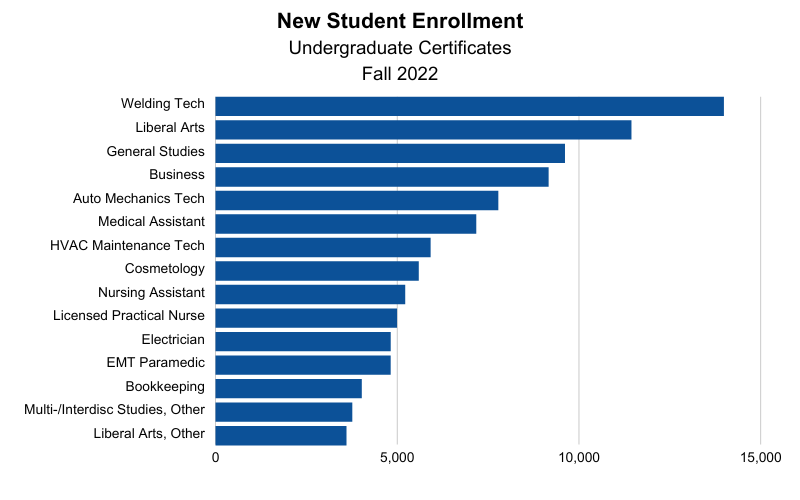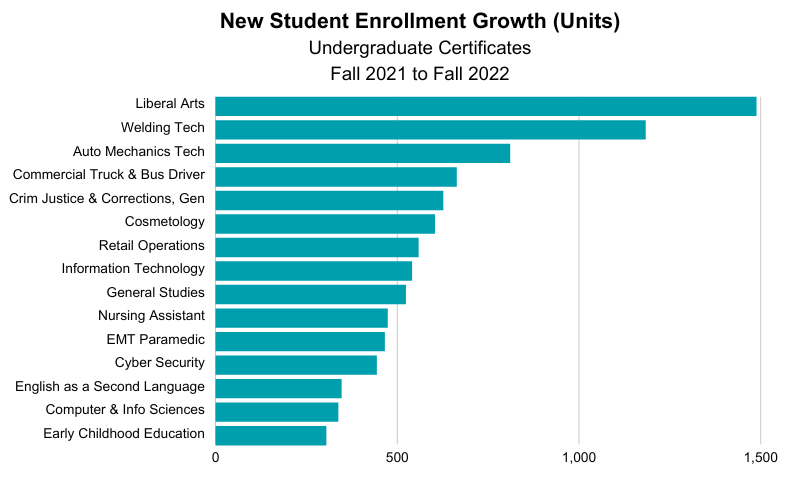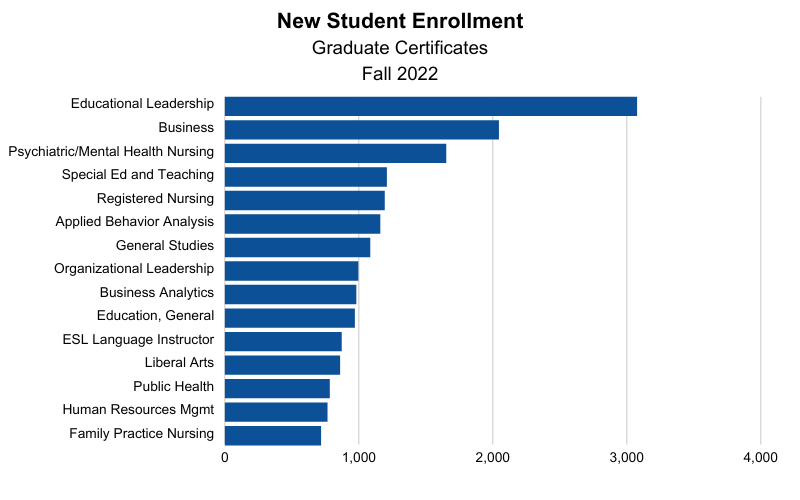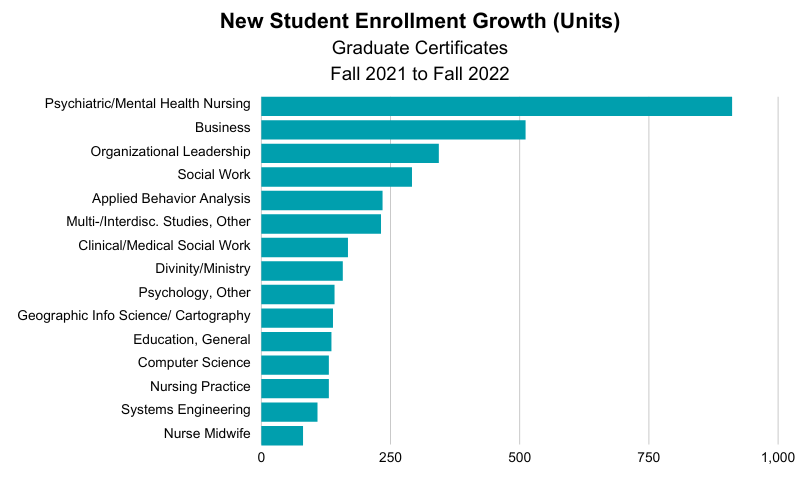The National Student Clearinghouse released data that shows year-over-year (YoY) enrollment growth in certificate programs this spring, at both the undergraduate and graduate levels. Undergraduate certificate enrollment grew 5.5 percent from spring 2022 to spring 2023 and enrollment in graduate certificate programs was up 4.6 percent.
What programs are contributing to this growth?
Growth Drivers for Program Enrollment
Using Gray’s Program Enrollment Dashboard, which tracks enrollment data from the National Student Clearinghouse at the program level, we decided to see which certificate programs are driving this growth. Spring 2023 enrollment data is not yet available at the program level, so we used enrollment data from fall 2021 and fall 2022 to analyze trends.
We should also note that Gray tracks two types of enrollment metrics. Total enrollment tracks the overall number of students enrolled in a program each term. New student enrollment tracks the number of new students entering a program each term. The charts in this blog show data for new student enrollment as the more current indicator of program demand.
Undergraduate Certificates
Overall, total enrollment in undergraduate certificate programs grew 2 percent YoY in fall 2022. Even more promising, new student enrollment grew 6 percent.
Welding programs are showing strong demand among new students. These programs enrolled the most new students (almost 14,000) among all undergraduate certificate programs in fall 2022. They also experienced the second-highest YoY growth in new student enrollment. On a side note, Texas had the most new students enrolling in welding programs, as well as the most job postings for welders.

Source: Gray DI Program Enrollment Dashboard with data from National Student Clearinghouse
Liberal Arts and General Studies certificates had the second and third-highest enrollment volumes among new students in Fall 2022 and also experienced strong YoY enrollment growth. Other growing certificate programs encompassed a wide range of workforce-focused fields, from Auto Mechanics Technicians to Cosmetology to Early Childhood Education. IT-related programs also had strong YoY enrollment growth.

Source: Gray DI Program Enrollment Dashboard with data from National Student Clearinghouse
Graduate Certificates
Mirroring the trend at the undergraduate level but on a smaller scale, enrollment in graduate certificate programs is trending up. Total enrollment grew 1 percent YoY in fall 2022, and new student enrollment grew 2 percent.
At the program level, we are seeing growth in education, health, and business-related programs. These disciplines accounted for 12 of the top 15 programs by overall volume of new student enrollment in fall 2022.

Source: Gray DI Program Enrollment Dashboard with data from National Student Clearinghouse
Interestingly, few IT-related programs were among the most-enrolled by new students (except for Business Analytics, which was included in the count of business-related programs but could also be considered IT-related).
In terms of YoY growth in new student enrollments, Psychiatric/Mental Health Nursing was at the top of the list. Given the growing demand for mental health professionals, this is a promising development. Business, Social Work, and Psychology-related programs also experienced strong YoY growth.

Source: Gray DI Program Enrollment Dashboard with data from National Student Clearinghouse
As enrollment pressures continue to make news, it is encouraging to see areas of growth. Certificates offer specialized knowledge in a particular field and are an accessible option for those unable or unwilling to commit to longer duration and more costly programs. They are attracting undergraduate students seeking workforce skills and graduate students seeking career advancement.




